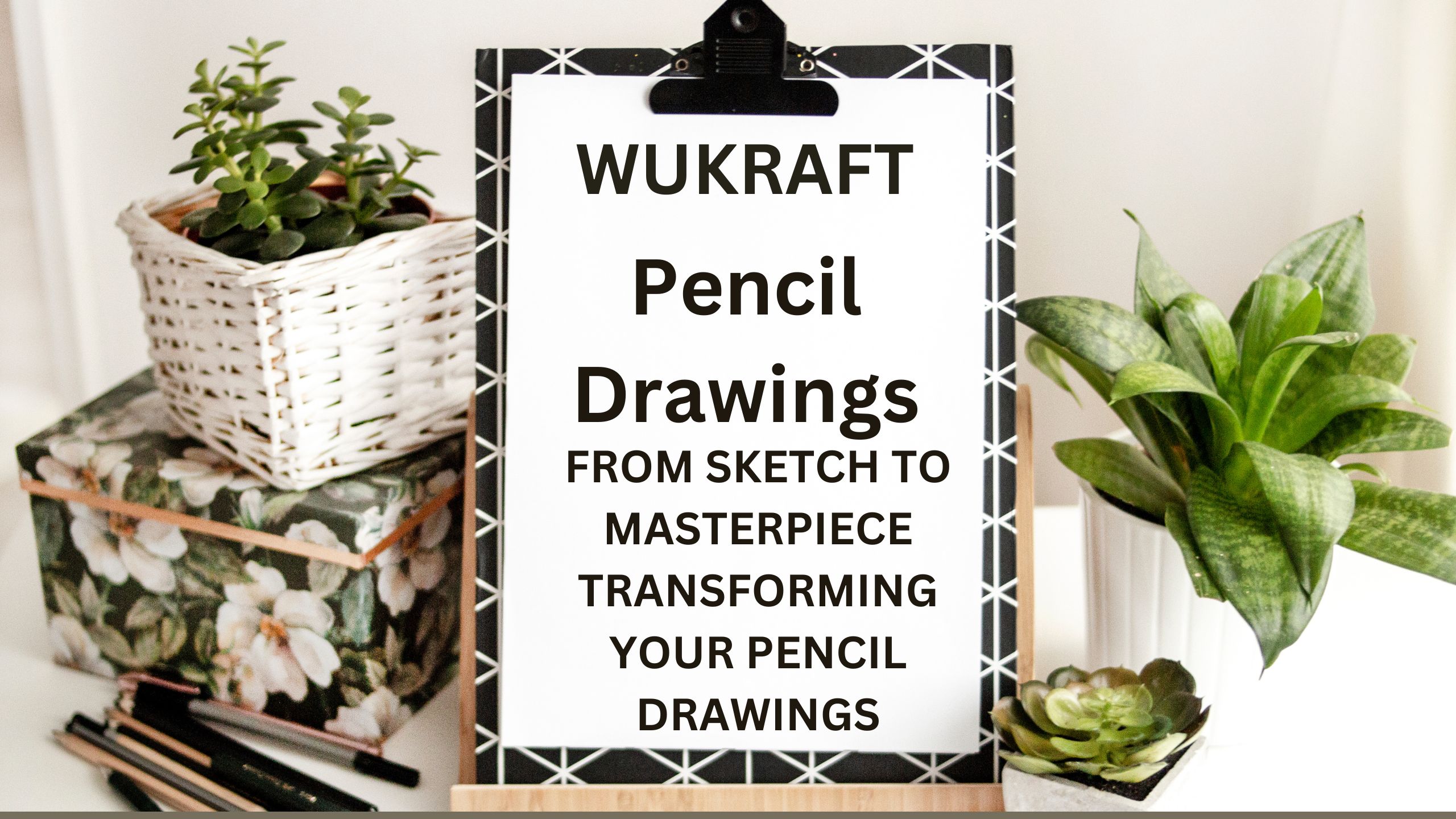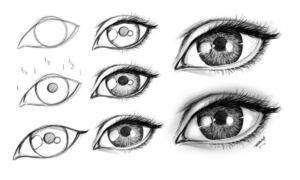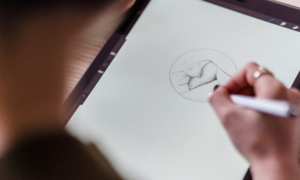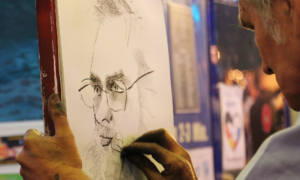The art of pencil drawing is a testament to the timeless beauty of a seemingly simple and humble medium. A mere pencil, a piece of paper, and an artist’s creative vision combine to create magic on the canvas. While a pencil sketch can stand as an art form in its own right, there’s a certain allure in taking that initial sketch and transforming it into a masterpiece that captivates the soul and sparks the imagination.
This journey from sketch to masterpiece is a testament to the boundless potential of artistry, an odyssey that artists embark upon to breathe life into their drawings, transcending the limits of graphite and paper. This blog delves into the intricate process of harnessing your artistic prowess, pushing the boundaries of your creativity, and elevating your humble pencil sketches into captivating, awe-inspiring works of art.
From the first tentative lines drawn on a blank canvas to the finishing touches that bring your vision to life, every step is a revelation, a testament to the artist’s dedication, skill, and passion. Whether you’re an emerging artist looking to refine your craft or an experienced hand aiming to push the boundaries of your abilities, this exploration of sketch to masterpiece will guide you through the transformative stages that lie at the heart of artistic creation.
Each stroke of the pencil, each play of light and shadow, is a chance to breathe life into your subject, tell a story, or invoke an emotional response. This process is not merely about replicating the physical world but about infusing the intangible aspects of your imagination into your work. It’s about making your audience see, feel, and experience your world through your eyes and hands.
As we delve into the intricacies of this artistic odyssey, you’ll discover how to refine your initial sketch, imbue your artwork with depth through shading, explore different compositions to guide the viewer’s gaze, and even how technology can enhance your artistic expression. Through this exploration, you’ll learn that the path to creating a masterpiece is not merely a destination but a lifelong journey, marked by growth, self-discovery, and boundless possibilities.
So, let’s embark on this creative voyage together, uncovering the secrets and techniques that can help you breathe life into your pencil drawings, ultimately transforming them into breathtaking masterpieces that leave a lasting mark on the world of art.
1. Start with a Solid Foundation
- Mastering the Basics: Before you can create a masterpiece, you need to become proficient in the fundamentals of art. This includes understanding concepts like proportion, perspective, and anatomy. Practicing basic shapes, lines, and figures will help you develop a strong understanding of how to accurately depict subjects in your sketches. Begin with simple objects and gradually work your way towards more complex subjects. This step might seem elementary, but it’s the cornerstone upon which all your future artwork will be built.
- The Power of Practice: The old adage that “practice makes perfect” holds true in the world of art. Regular practice sharpens your skills and allows you to develop muscle memory, a critical element in achieving precision and control in your pencil drawings. Carve out time in your schedule to sketch, draw, and experiment. Embrace challenges and tackle subjects that stretch your abilities. Your goal should be to develop your drawing skills and become comfortable with the tools of your trade.
- Study and Observation: Artists often find inspiration and growth through the study and observation of the world around them. Study the works of the masters and modern artists alike. Learn from their techniques and styles. Observe the world with a critical eye, noticing details, forms, and structures. The more you study and observe, the more you’ll absorb and apply to your own art.
- https://youtu.be/Z_rOVcl5VF0?si=DWS28FJFComLH2t2
- Seek Constructive Feedback: Don’t be afraid to share your work and seek feedback from fellow artists, teachers, or art communities. Constructive criticism can help you identify areas for improvement and can provide fresh perspectives on your work. By embracing feedback, you can gain valuable insights and refine your skills even further.
- Set Realistic Goals: As you work on building your foundation, it’s crucial to set realistic goals for yourself. Understand that growth takes time, and you will face challenges along the way. Break down your artistic journey into achievable milestones. Whether it’s mastering a specific technique, drawing a particular subject, or creating a certain number of sketches, setting goals keeps you motivated and focused.
- Patience and Perseverance: The process of establishing a solid foundation in art can be challenging, and it’s important to remain patient and persistent. Artists of all levels encounter moments of frustration and self-doubt. However, these are part of the learning process. Remember that even renowned artists started with the basics and built their skills over time. Keep your passion alive, and let it fuel your persistence.
2. Refine Your Sketch
- Cleaning Up Lines: The first order of business in refining your sketch is to clean up your lines. The initial sketch is often rough, with loose and sometimes messy lines. Use a good-quality eraser to remove unnecessary marks and smudges. Pay special attention to the outlines of your subject, making sure they are clean and well-defined. Clear, sharp lines provide a solid structure for the rest of your drawing.
- Proportions and Perspectives: Ensure that your sketch accurately reflects the proportions and perspectives of your subject. Double-check the measurements and relative sizes of different elements within your composition. If something appears off, use your foundational knowledge to correct it. Perspective lines, such as vanishing points, can be extremely helpful for achieving a realistic sense of depth in your sketch.
- Filling in Details: Depending on your artistic style and the subject matter, you may need to add more details to your sketch. This could involve enhancing the intricacies of a landscape, refining facial features in a portrait, or adding texture to an object. Take your time to ensure these details align with your artistic vision and maintain a high level of precision.
- Experiment with Line Weight: The thickness and weight of your lines play a significant role in the visual impact of your sketch. Varying line weight can add depth, dimension, and emphasis to different parts of your drawing. For instance, you might use thicker lines for the foreground or important elements and thinner lines for background details. This technique can create a sense of focus and perspective in your artwork.
- https://youtu.be/W8M3MQEHuuo?si=QzVV1AZEup8b9jsz
- Use Different Pencil Grades: Pencil drawings are versatile, largely due to the wide range of pencil grades available. Lighter pencils (e.g., 2H or H) are excellent for delicate and fine lines, while darker pencils (e.g., 2B or 6B) are suitable for shading and creating depth. Experiment with different pencil grades to achieve the desired effects in your sketch.
- Incorporate Fine Liners: In addition to regular pencils, fine liner pens can be valuable tools for refining your sketch. These pens offer precise, clean lines and can be particularly useful for outlining and adding fine details. They come in various thicknesses, allowing you to choose the one that best suits your needs.
- Embrace Creative Freedom: While refining your sketch, remember to embrace your own artistic style and creative instincts. Don’t feel confined by rigid rules; allow your artistic intuition to guide you. The process of refining a sketch is not just about precision but also about infusing your unique perspective into the artwork.
- Continuous Evaluation: Throughout the refinement process, continuously evaluate your sketch. Step back and assess your work from a distance, look at it in different lighting, and even view it upside down. This can help you identify any remaining inconsistencies or areas that require further refinement.
3. Experiment with Composition
- The Rule of Thirds: One of the most well-known composition techniques is the rule of thirds. Divide your canvas into a 3×3 grid by drawing two equally spaced horizontal and vertical lines. This creates nine equal sections. Position your main subject or focal point at the intersections of these lines, or along them. Placing your subject off-center often creates a more visually appealing and dynamic composition.
- Leading Lines: Leading lines are lines within your composition that lead the viewer’s eye toward a specific point. These lines can be implied by the arrangement of elements, such as roads, rivers, or converging objects. By incorporating leading lines, you can direct the viewer’s gaze towards the central subject or an important element within your drawing.
- Balancing Elements: Balance is crucial in composition. Achieving balance doesn’t necessarily mean that your composition is symmetrical; it means that the visual elements within your drawing are distributed in a way that feels harmonious. You can balance a large, heavy object on one side of your composition with several smaller, lighter objects on the other side to create equilibrium.
- Focal Points: Clearly define the focal point of your drawing. This is the area where you want the viewer’s attention to be drawn. By creating a distinct focal point through contrast or detail, you make your artwork more engaging and ensure that the viewer’s eye is directed where you want it to go.
- Negative Space: Don’t forget about the areas around your subject. Negative space can be as important as the subject itself. Experiment with how you use negative space to enhance your composition. Sometimes, leaving large areas of empty space can create a sense of tranquility or isolation, while filling the space with details can make your drawing more dynamic.
- https://www.youtube.com/live/zqol2tv0OhA?si=1IrJay_zeoVMkc0e
- Frame Within a Frame: Using natural or implied frames within your composition can add depth and context to your artwork. This technique involves placing your subject within an element in the scene, such as a doorway, arch, or window. It adds layers and visual interest to your drawing.
- Golden Ratio: The golden ratio is a mathematical concept found in nature, art, and architecture. It’s often considered to create aesthetically pleasing compositions. You can use the golden ratio to determine the placement and proportions of elements in your drawing, resulting in a composition that feels balanced and visually satisfying.
- Experiment with Different Perspectives: Changing the perspective of your subject can add a unique twist to your composition. Try unusual angles or viewpoints to create a sense of depth and dynamism. For example, a low perspective can make a subject appear grand and imposing, while a high perspective can make it seem small and vulnerable.
- Symmetry and Asymmetry: Depending on your artistic intention, you can choose to create a symmetrical or asymmetrical composition. Symmetry provides a sense of balance and order, while asymmetry can introduce tension and interest. Both approaches have their merits, and your choice should align with your artistic vision.
- Digital Tools for Experimentation: If you’re working digitally, take advantage of the flexibility that digital tools offer. You can easily experiment with different compositions by resizing, moving, or duplicating elements. This freedom allows you to explore various options and select the one that best serves your artistic vision.
4. Add Value with Shading
- Understanding Light and Shadow: Before you can effectively shade your drawing, it’s essential to understand how light interacts with objects. Light source direction, intensity, and the angle at which it strikes objects all play a role in determining how shadows are cast. Spend time observing how light affects the world around you; this will provide you with invaluable insights for shading.
- Use a Full Range of Values: Shading relies on the use of various tones, from the darkest shadows to the brightest highlights. Pencil grades ranging from 9H (lightest) to 9B (darkest) can help you achieve this full range of values. Experiment with different grades to create the desired contrast in your drawing.
- Hatching and Cross-Hatching: Hatching involves creating a series of parallel lines to represent shading. The closer these lines are together, the darker the area will appear. Cross-hatching, on the other hand, involves layering a second set of lines at an angle to the first. The crisscrossing lines build up tones and textures, adding depth and complexity to your shading.
- Stippling: Stippling is a shading technique where tiny dots are used to create values and textures. The density and spacing of the dots determine the darkness or lightness of a particular area. Stippling can be time-consuming but offers excellent control and detail.
- Blending: Blending is the process of smoothing and softening transitions between different shades. You can use blending tools like tortillons, blending stumps, or even your finger to create smooth gradients. Blending can help you achieve a more realistic and organic look in your shading.
- Use the Right Paper: The type of paper you use can significantly affect the quality of your shading. Paper with a tooth or texture can hold more pencil graphite, allowing for smoother shading. Experiment with different paper types to find one that suits your style.
- https://youtu.be/qlXRufZysB8?si=9ulzhD5bBVbVAboW
- Work from General to Specific: Start shading with a general outline of where the light and shadow areas will be. Gradually refine the shading as you progress, paying attention to the fine details. This approach ensures that the overall values and contrasts are correct before focusing on the specifics.
- Create a Light Source: Determine the direction of your light source. This will guide you in shading, as objects facing the light source will have fewer shadows, while those turned away will have deeper shadows. Consistency in the direction of light is essential for a coherent and realistic look.
- Patience and Layers: Achieving a well-shaded drawing often requires patience and multiple layers of shading. Start with light, gentle strokes, and gradually build up to darker tones. Layering enables you to control the level of shading and maintain a smooth transition between values.
- Experiment with Texture: Texture can add character to your drawings. Consider using different shading techniques to create various textures. For example, stippling can mimic the texture of rough surfaces, while smoother blending can evoke the feel of smooth, reflective objects.
- Study Real Life and References: Observing real-life objects, photographs, or reference images can provide valuable insights into how light and shadow interact. Study the interplay of light and shadow in these references and apply the lessons to your drawing.
5. Explore Different Styles
- Personal Growth: Exploring different styles challenges you to break out of your artistic comfort zone. This process fosters personal growth by encouraging you to adapt to new techniques and aesthetics. It pushes you to become a more versatile and resilient artist.
- Creative Inspiration: Different styles can provide fresh sources of creative inspiration. They can be a wellspring of ideas that you can apply to your work, leading to new and unique artistic interpretations.
- Broadening Your Skill Set: Each artistic style demands specific skills and techniques. By experimenting with diverse styles, you expand your skill set. You might become proficient in areas you never imagined, enhancing your overall artistic ability.
- Expressing Emotions and Concepts: Different styles often convey various emotions and concepts. Some styles are better suited for portraying realism and accuracy, while others excel in abstract representation. By exploring various styles, you can express different ideas, emotions, and themes in your art.
- Staying Engaged and Preventing Burnout: Sticking to a single style can lead to creative burnout. Exploring different styles keeps your creative energy flowing. It’s a way to remain engaged with your art and maintain a sense of excitement and discovery.
6. Use the Right Tools
1. High-Quality Pencils: Your primary tool in pencil drawing is, of course, the pencil itself. Invest in high-quality graphite pencils with various grades, ranging from 9H (the hardest, lightest) to 9B (the softest, darkest). These pencils allow you to create a full range of values, from delicate lines to deep shadows. Quality pencils also offer consistent lead and lead density, providing more control over your work.
2. Paper Selection: The paper you choose plays a pivotal role in your artwork. Select a paper that complements your drawing style. Paper comes in various textures, weights, and sizes. A rougher texture holds more graphite and is ideal for detailed work, while smoother paper is excellent for broader strokes and blending. Heavyweight paper prevents bleed-through and is perfect for detailed drawings.
3. Erasers: Erasers are indispensable for correcting mistakes and achieving highlights in your drawings. Different erasers serve various purposes. A kneaded eraser is excellent for gently lifting graphite, while a vinyl eraser effectively removes more substantial lines. Electric erasers provide precision in highlighting and detail work.
4. Sharpeners: A reliable pencil sharpener is essential for maintaining a fine point on your pencils. Electric sharpeners are efficient for frequent use, while manual sharpeners offer more control. Consider having both in your toolkit to cover various sharpening needs.
5. Blending Tools: Blending tools help you create smooth transitions between shades. Blending stumps and tortillons are often used for this purpose. They enable you to create gradations and soft textures in your drawings.
6. Fixative Spray: Fixative spray is used to preserve and protect your pencil drawings from smudging. It’s especially important for works that are intended for display. There are workable and final fixatives available, with the former allowing you to make adjustments even after applying the fixative.
7. Rulers and Straight Edges: For precise lines and shapes, rulers and straight edges are invaluable tools. They ensure accuracy and straightness in your drawings, particularly when working on architectural or geometric subjects.
8. Brushes: Brushes can be used to remove eraser debris, smudge or blend graphite, or apply fixative spray. Ensure your brushes are clean and free from any previous colors to prevent unwanted blending in your drawings.
9. Blotting Materials: Having blotting materials like tissues or paper towels nearby can help control smudging and ensure clean, crisp lines in your drawings.
10. Work Surface: Your choice of work surface can affect your drawing experience. A drawing board or easel provides stability and comfort, making your work more enjoyable and efficient.
11. Light Source: Adequate lighting is essential for accurate shading and detail work. A consistent and well-distributed light source reduces shadows on your drawing and helps you see your work clearly.
12. Digital Tools (Optional): In the age of technology, digital tools and software can enhance your traditional pencil drawings. You can scan your sketches for digital manipulation, adding color, texture, or effects.
It’s important to remember that the right tools vary from artist to artist. Your selection should align with your personal preferences, style, and the specific requirements of your artwork. Experiment with different tools and combinations to find what works best for you.
Learn more about From Sketch to Masterpiece: Transforming Your Pencil Drawings…
If you’re eager to delve even deeper into the world of pencil drawing and explore more aspects of the journey “From Sketch to Masterpiece: Transforming Your Pencil Drawings,” we’re pleased to let you know that we have another blog on this very topic. In our second blog, we continue the artistic journey, delving into the remaining steps and sharing valuable insights to help you further refine your pencil drawing skills and create breathtaking masterpieces.
Whether you’re looking to enhance your shading techniques, learn about the importance of composition, or explore different artistic styles, our second blog is your artistic companion on this exciting voyage. Stay tuned and continue your exploration of the fascinating world of pencil drawing!
Watch this tutorial to know more about From Sketch to Masterpiece: Transforming Your Pencil Drawings:
Conclusion:
The path from a simple pencil sketch to a masterpiece is a journey filled with creative exploration, dedication, and the continuous pursuit of artistic excellence. In this comprehensive guide, “From Sketch to Masterpiece: Transforming Your Pencil Drawings,” we’ve uncovered the key steps and techniques that artists at all levels can harness to elevate their pencil drawings to awe-inspiring heights.
We began by emphasizing the importance of building a solid foundation in your art. Mastering the basics, practicing, studying, and seeking feedback were the cornerstones of this journey. Without a strong foundation, the subsequent steps in transforming your sketches into masterpieces would lack the support needed to reach their full potential.
The journey then took us to the crucial stage of refining your sketch. Cleaning up lines, ensuring accurate proportions, and adding details were vital to ensuring your drawing was well-prepared for the next steps. This process required patience and precision, as each line and detail contributed to the overall harmony and balance of the artwork.
Experimenting with composition emerged as a transformative step in creating captivating drawings. The use of the rule of thirds, leading lines, and balancing elements enabled artists to guide the viewer’s gaze and convey powerful messages. Artistic expression and creativity flourished in this stage, as different composition techniques offered unique ways to convey emotions and stories.
Adding value with shading became the heart and soul of bringing your pencil drawings to life. Through understanding light and shadow, mastering various shading techniques, and creating a full range of values, artists created depth, dimension, and realism within their sketches. The interplay of light and shadow awakened the drawings, making them more dynamic and engaging.
The exploration of different artistic styles showcased the versatility and adaptability of artists. From realism to abstraction, artists discovered how to convey a broad spectrum of emotions and ideas by adapting their style. This creative flexibility encouraged personal growth, broadened skill sets, and kept the artistic journey fresh and invigorating.
The importance of using the right tools couldn’t be overstated. High-quality pencils, the right paper, erasers, sharpeners, and other essential tools were the artist’s trusted companions. The selection of these tools directly influenced the quality and precision of the artwork, ensuring that artists could bring their visions to life with finesse and accuracy.
As a final note, we also introduced the idea of another blog related to “From Sketch to Masterpiece: Transforming Your Pencil Drawings,” providing an opportunity to explore additional aspects of this fascinating artistic journey.
In conclusion, the transformation of your pencil drawings from sketches into masterpieces is a journey that requires dedication, practice, and the right techniques. With each step, you not only enhance your artistic skills but also embark on a journey of self-discovery and creative growth. By implementing the insights shared in this guide, you have the tools and knowledge needed to breathe life into your artwork and create captivating masterpieces that resonate with your audience and inspire others to embark on their own artistic odysseys.




